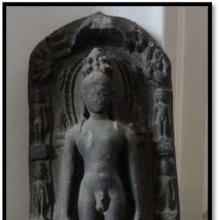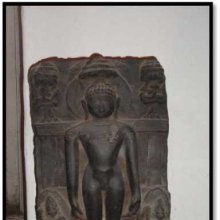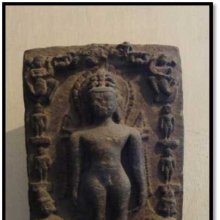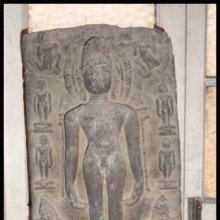Shirashcakra, Śiraścakra, Shiras-cakra: 3 definitions
Introduction:
Shirashcakra means something in Hinduism, Sanskrit, Jainism, Prakrit. If you want to know the exact meaning, history, etymology or English translation of this term then check out the descriptions on this page. Add your comment or reference to a book if you want to contribute to this summary article.
The Sanskrit term Śiraścakra can be transliterated into English as Sirascakra or Shirashcakra, using the IAST transliteration scheme (?).
Alternative spellings of this word include Shirashchakra.
Images (photo gallery)
In Hinduism
Shilpashastra (iconography)
Source: Wisdom Library: Śilpa-śāstraŚiraścakra (शिरश्चक्र, “round hair-ornament”):—A Sanskrit technical term referring to the Halo depicted at the back of the head. This term is used in the Hindu art of scientific and religious sculpture, known as Śilpaśāstra. It is also known as Bhāmaṇḍala or Prabhāmaṇḍala.
Source: Google Books: Elements of Hindu iconographySanskrit iconographic treatises insist that the Śiraścakra, (or “the halo surrounding the head”) of every divine being, is a necessary part of the image thereof. It should have the form of a circle or a full-blown lotus, eleven aṅgulas in diameter, and should be away from the head by a distance equal to a third of its diameter.
This halo-circle is attached to the back of the head of images by means of a rod whose thickness is equal to one-seventh of the diameter of the Śiraścakra. The Śiraścakra has theoretically to be something which is aloof and unconnected; but in material representations, it is impossible to have a Śiraścakra which is not attached to the head; hence the need for this connecting piece. This piece is covered with and hidden in wreaths of flowers, which appear to adorn the hair-knot of the image at the back, so as to make the Śiraścakra appear to be projecting distinctly behind the head.
The Śiraścakra of the sculptures is considered to correspond to the prabhāmaṇḍala (or “the halo of light”) which surrounds all divine beings. In other words, it is intended to serve as a material representation of the glory or circle of light shining around the head of gods.

Shilpashastra (शिल्पशास्त्र, śilpaśāstra) represents the ancient Indian science (shastra) of creative arts (shilpa) such as sculpture, iconography and painting. Closely related to Vastushastra (architecture), they often share the same literature.
In Jainism
General definition (in Jainism)
Source: HereNow4U: GlossaryŚiraścakra.—Halo, attached to the back of the head of images by means of a rod; found with bronze images.

Jainism is an Indian religion of Dharma whose doctrine revolves around harmlessness (ahimsa) towards every living being. The two major branches (Digambara and Svetambara) of Jainism stimulate self-control (or, shramana, ‘self-reliance’) and spiritual development through a path of peace for the soul to progess to the ultimate goal.
See also (Relevant definitions)
Partial matches: Shiras, Cakra.
Full-text: Bhamandala.
Relevant text
Search found 3 books and stories containing Shirashcakra, Shiras-cakra, Shirascakra, Shirash-cakra, Śiraś-cakra, Siras-cakra, Śiraścakra, Sirascakra; (plurals include: Shirashcakras, cakras, Shirascakras, Śiraścakras, Sirascakras). You can also click to the full overview containing English textual excerpts. Below are direct links for the most relevant articles:
Jain Remains of Ancient Bengal (by Shubha Majumder)
Pañca-tīrthika type of Mahāvīra sculptures < [Chapter 6 - Iconographic Study of Jaina Sculptural Remains]
Caubīsī type of Mahāvīra sculptures < [Chapter 6 - Iconographic Study of Jaina Sculptural Remains]
Images of Tīrthaṅkara Ajitanātha < [Chapter 6 - Iconographic Study of Jaina Sculptural Remains]
The Religion and Philosophy of Tevaram (Thevaram) (by M. A. Dorai Rangaswamy)
Chapter 3.5 - Jalandharasura-murti (the conquest of Jalandhara Asura) < [Volume 2 - Nampi Arurar and Mythology]
Manasara (English translation) (by Prasanna Kumar Acharya)



